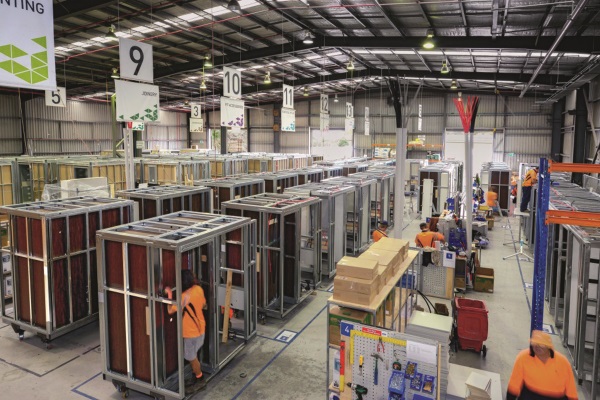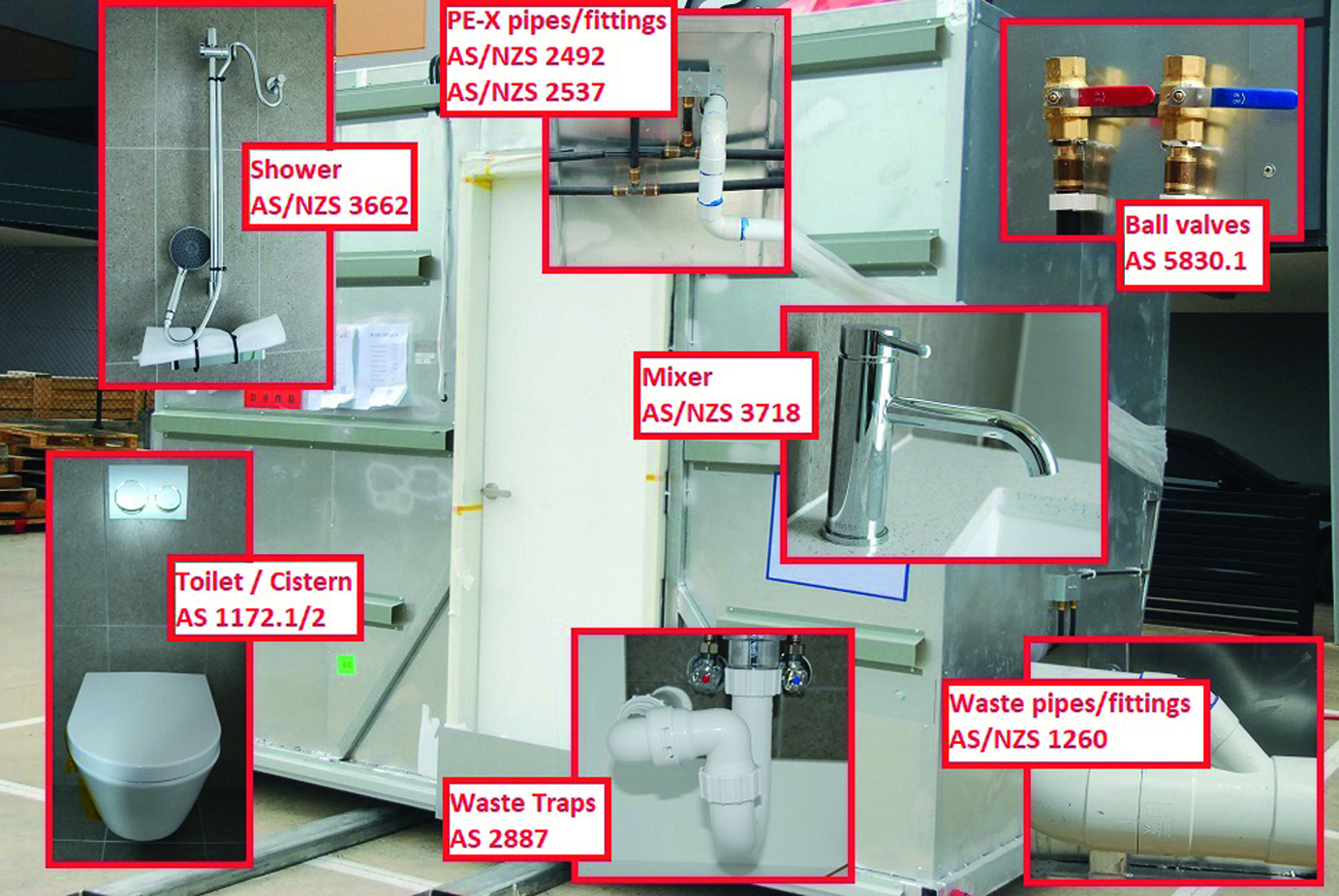Piecing the pod puzzle together when navigating certification and compliance for bathroom modules
Bathroom modules can be an attractive proposition to the construction of multi-storey dwellings; however, as Terry Nguyen explains, hard work needs to be done upfront at the approvals stage and must include the involvement and co-operation of all parties who form part of the process.
The construction industry has been one of Australia’s largest and best performing industries for many years now. And with construction still booming the competition between contractors is ever increasing. One of the latest trends across high density construction projects is the move towards prefabricated modular rooms, and in particular bathrooms.
The humble bathroom is a small space where a lot of skilled labour is required in a concentrated area. The rooms are identical, and all of this makes it feasible to have the rooms prepared and made ready to be inserted into a high rise construction like building blocks on a Lego castle.
In principle, the concept provides the prospect of efficiency gains through reductions in overall construction time and costs, but like all good things there are pitfalls that can easily be overlooked.
In many ways, prefabricated bathroom modules (or pods) are no different to a bathroom that is created in-situ. They have plumbing and drainage lines roughed-in and fixtures attached to them such as taps, toilets, showers, etc.
Products used are the same brands that come from the same factories, and are installed and set out to predetermined locations on the building specifications in the same manner. The differences lie within the concept of creating a bathroom offsite, and having it inserted into the rest of the development.
Creating a bathroom module offsite, ready to be installed, only becomes economically viable if the entire bathroom is completely finished and where no further work is needed. This means that wall cavities, where the services reside, are already covered with insulation, cladding, tiles, etc.
While the fixtures are visible, the rest of the regulated work is unavailable for inspection once installed. By the time the bathroom module is fitted into place, all that is on show for a plumbing inspector is a finished bathroom with only fixtures exposed. Internal plumbing cannot be inspected, and this may even include the inter-connections between the bathroom with the rest of the building.
The bathroom module in its application can therefore be viewed as more of a manufactured product that uses plumbing components.
Products used for plumbing in Australia are assessed and approved for use through the WaterMark certification scheme. The WaterMark certification scheme has products assessed prior to manufacture to ensure that they (if made correctly) will be fit for purpose and meet all requirements of our plumbing code.
Modules are required to be certified against the requirements of WMTS-050 and carry their own WaterMark certification before they can be installed. The certification process involves checking that pods are made from suitably certified plumbing products, and that the products are used in a manner that creates watertight joints. The testing for WaterMark certification on the pods themselves is quite a simple process.
A short pressure test and a quick review of the bill of materials, in essence, is all that is needed for a bathroom to be given a WaterMark licence. Bathrooms are then given the green light to be mass produced in large quantities and delivered to building sites of large multi-storey high rise dwellings before an inspector has had the opportunity to see one.
Unlike any other plumbing product under the WaterMark certification scheme, bathroom modules have an added level of complexity.
Conformity Assessment Bodies (CABs) typically work with accredited laboratories during the product certification stage for WaterMark. However, bathrooms not only need to meet product certification, but also the plumbing installation code. This requires the assistance of a third party, where a regulator needs to also approve the actual design of the bathroom itself. And when considering that regulators have varying opinions between states and territories the process becomes yet more cumbersome again.
Prudent CABs will work with the regulators of the states and territories to ensure the design of the pods do not infringe on any local installation requirements. Having a single design to meet particular requirements in different jurisdictions can be challenging for CABs needing to apply product certification for the entire nation.
A lot of background work is required upfront to validate the design where a WaterMark can be applied without any need for confusing exclusions in certain areas. Varying regulations between States and Territories is difficult, but the risks with the manufacturing of bathroom pods does not end there.
Bathroom modules require a lot of different plumbing products for completion, and it is very easy for a design to be slowly altered over time. Often inadvertently through many different possible scenarios.
What happens when the ‘regular’ pipe work runs out of stock? What happens when the current bathroom fixtures are no longer in fashion? What happens when a manufacturer changes its product design, goes into administration or refuses supply?
As the pods are manufactured products, it is quite possible that not all works will be performed by licensed practitioners. Unqualified workers may not understand the impacts of inter-changing products.
It is important that the CABs who inspect the manufacturing locations have a design freeze to work with to pick up on any modifications that have been made over time to mitigate the risk of non-compliant modules needing re-work once installed.
PROVE Standards & Engineering, during product testing, painstakingly take note of every single plumbing fitting on a bathroom module and note all markings in the final test report. The process is long, slow and not actually a mandatory requirement for testing and reporting. However it provides a level of surety to the CABs that the bathrooms have been constructed as per the design specifications, and the ability to quickly check whether any products in the final design have been changed.
Any products not bearing a WaterMark licence can be identified before mass manufacturing begins, or before modules are installed with problematic components buried behind tiles, steel sheets and columns. Attempting to rectify or replace faulty components may not be possible once the larger building has been finished.
Bathroom modules can be an attractive proposition to the construction of multi-storey dwellings, and there is no reason that they cannot be a trouble-free alternative to building bathrooms in-situ. However, hard work needs to be done upfront at the approvals stage and must include the involvement and co-operation of all parties who form part of the process.
Granting WaterMark certification on a bathroom module can be a quick, simple procedure under the current WaterMark process. However, correctly applying WaterMark certification to products for ongoing compliance requires an extra level of detail to safeguard our communities and builders alike from disastrous consequences in future years.


